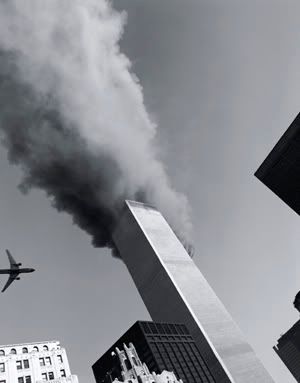
Penn & Teller Conspiracy Theories
A conspiracy theory attempts to attribute the ultimate cause of an event or chain of events (usually political, social, or historical events), or the concealment of such causes from public knowledge, to a secret, and often deceptive plot by a covert alliance of powerful or influential people or organizations. Many conspiracy theories say that major events in history have been dominated by conspirators who manipulate political happenings from behind the scenes.
http://en.wikipedia.org/wiki/Conspiracy_theory
The Conspiracy Test
http://news.bbc.co.uk/2/hi/programmes/conspiracy_files/default.stm
Top 10 Wackiest Conspiracy Theories
http://www.2spare.com/item_43133.aspx
List of conspiracy theories
http://en.wikipedia.org/wiki/Jewish_conspiracy#The_Jewish_world_domination_conspiracy_theory
How Conspiracy Theories Work
http://people.howstuffworks.com/conspiracy-theory.htm
Are you the kind of person who likes to hear to a good conspiracy theory?
Some people simply do not like the discomfort that a conspiracy theory creates. But for others, conspiracy theories are intriguing. They like to explore all of the possibilities that a conspiracy theory presents, in the same way that they like to explore puzzles or mystery novels. Sometimes a conspiracy theory is ridiculous and learning about it is a form of entertainment. Or you may find that the theory is credible and it makes you think. It's interesting to consider the theory, weigh the evidence and come up with a conclusion.
In the 21st century, one event reigns supreme in the catalog of conspiracy theories: the September 11, 2001 attack on the United States. This event is seared into the nation's consciousness and significantly affected the entire planet. It seems inevitable that people would cry "conspiracy" about any event with this much impact. However, the conspiracy theories around 9/11 have been strong and consistent.
The whole controversy surrounding 9/11 boils down to one simple question:
Did 19 terrorists cause all of the destruction witnessed on 9/11/2001, or did a group of people in the U.S. government conspire to create that destruction for political gain?
The U.S. government has offered the terrorist explanation, and that is the story that many people believe. A large number of people, however, refuse to believe this "official story." They believe conspiracy theorists when they say that the U.S. government actually masterminded and executed the attack.
We could spend a great deal of time arguing one side or the other. Instead, we'll focus on the process. Isn't it fascinating that there can be two credible explanations for such a complex event, and that both explanations can be so diametrically opposed to one another?
How does a conspiracy theory like this get started? What is required to fuel it into a full-fledged public debate? Can the theory ever be proven? What does the possibility of the theory say about our society? In this article we will explore these questions and many others as we look at the events of September 11.
Conspiracy Theory Basics
The dictionary defines a conspiracy theory in this way:
A theory seeking to explain a disputed case or matter as a plot by a secret group or alliance rather than an individual or isolated act. [ref]
A conspiracy theorist, therefore, is a person who formulates such a theory.
There is a certain negative undertone to the term "conspiracy theory" in today's society. Detractors will point out that many conspiracy theories contain certain features that undermine their credibility. In this article, however, we will use the term "conspiracy theory" in its neutral sense. We are using it to mean an alternative explanation for an event, as it is defined in the dictionary.
In modern times there have been a number of "conspiracy theories." One example is the assassination of John F. Kennedy. After the assassination, the government offered its explanation of the events. A large number of people (at one point, more than half of the adult population in the United States) simply do not believe the government's explanation. This particular conspiracy theory rose to such a high level in the public consciousness that an entire Hollywood movie was made about it: "JFK", directed by Oliver Stone and released in 1991.
The Kennedy assassination really started the modern "conspiracy theory" movement. This is an event where the "official" government explanation of the crime was openly ridiculed by a large number of "normal citizens." Many people believe that the Kennedy assassination was carried out as part of a larger government-centered conspiracy, rather than as a random event arranged by a single gunman.
In the same way, a very large number of people do not believe that "terrorists" carried out the events seen on 9/11. Instead, they believe that the government caused those events.
Next, we'll look at how conspiracy theories get started.
How Conspiracy Theories Get Started
The events of 9/11/2001 are five years in the past, yet they are still a part of everyday life. Zacarias Moussaoui just began serving a life sentence after being convicted of taking part in the planning of the attack. At his trial, a large number of people recounted the horror of 9/11. The government also publicly played the tape from the cockpit voice recorder of Flight 93 for the first time. In addition, the movie "Flight 93" opened recently, with a huge amount of surrounding publicity. All of these events support the "official story" -- that terrorists hijacked four airplanes and crashed three of them into different targets, with passengers on the fourth flight forcing the jet down before it could do any damage.
Given the strength of the official story, the amount of evidence to support it and the fact that it has survived for five years without any significant public challenge, how can a conspiracy theory around 9/11 get started?
To understand how a conspiracy theory begins, let's look at the major events of 9/11. Most of us are familiar with this story because it has been repeated in the major media literally thousands of times and many of us lived through it as it happened. Here's a timeline of the events:
* On the morning of September 11, 2001, 19 Islamic terrorists board four domestic flights in the United States.
* 7:59 a.m. - American Airlines Flight 11 leaves Logan Airport in Boston.
* 8:14 a.m. - United Airlines Flight 175 also leaves Logan Airport.
* 8:20 a.m. - American Airlines Flight 77 leaves Dulles Airport in Washington.
* 8:41 a.m. - United Airlines flight 93 leaves Newark Airport in New Jersey.
* 8:45 a.m. - Flight 11 hits the WTC North Tower.
* 9:03 a.m. - Flight 175 hits the WTC South Tower.
* 9:25 a.m. - The FAA orders a "national ground stop" for all airplanes in the United States. No plane can take off, and all planes in the air must land.
* 9:30 a.m. - President Bush first addresses the nation and describes the events as an "apparent terrorist attack."
* 9:43 a.m. - Flight 77 hits the Pentagon.
* 10:05 a.m. - The South Tower falls.
* 10:10 a.m. - Flight 93 crashes in Pennsylvania.
* 10:10 a.m. - The wall at the Pentagon falls.
* 10:28 a.m. - The North Tower falls.
* 5:20 p.m. - WTC Building 7 falls.
* 8:30 p.m. - President Bush addresses the nation, laying the blame for the attack on terrorists.
Everything in this timeline is publicly visible. There is no conjecture -- everything on this list happened, and much of it was broadcast live.
The "official story" offers one explanation for these events, and it all makes sense to some degree. For example, by 9:30 a.m. on 9/11, video of the second jet flying into the South Tower had already been widely circulated. On that day, every major news outlet already had their cameras trained on the North Tower and were covering the problem there, so the crash at the South Tower was filmed from many different angles and broadcast immediately. So when the President called it an apparent terrorist attack at 9:30 a.m., that made sense -- terrorists are people who hijack airplanes. By 8:30 p.m., lots of apparent evidence had been released to bolster the terrorist story. Flight attendants and passengers had used air phones and cell phones to call from several of the planes. Pilots on the planes had also triggered alarms and keyed cockpit microphones so people on the ground could hear what was happening.
As more and more evidence was released over the next several days, it became clear what happened: 19 terrorists hijacked four airplanes and caused massive destruction.
This is a pretty straightforward story. Hundreds of planes have been hijacked by terrorists in the past, so it is easy to imagine a coordinated attack on four airplanes at once. The idea of using planes as giant flying bombs was new and ingenious, but within the realm of possibility. It is very easy to believe the official story.
So for a conspiracy theory to get started, there has to be something that a conspiracy theorist can use, something that doesn't make sense. In some conspiracy theories, it's something very small. But in the case of 9/11, there are four big things that do not make much sense in the official story. These things include:
* Three skyscrapers collapsed. Never has a skyscraper ever collapsed because of fire. When the North and South Towers collapsed, that might have seemed believable because of the giant airplanes that crashed into them. But when WTC 7 collapsed, that was completely unprecedented.
* The way the President and his handlers acted when the second plane crashed into the South Tower. The reaction was strange. When the first plane crashed into the North Tower, it might be possible to excuse the behavior of the President's team because maybe nobody really knew what happened. However, by the time the second jet hit, everyone knew what was happening, so the fact that the President and his handlers did not respond immediately is certainly odd.
* The Pentagon could be hit by a big, lumbering passenger jet. On the face of it, that seems completely impossible. The Pentagon, after all, is the nerve center for the largest and most sophisticated military organization that the world has ever known. So it is reasonable to assume that there would be a defensive system in place, making the building invulnerable. Surely buildings like the Pentagon would be protected by surface-to-air missiles, wouldn't they? The attack on the Pentagon happened 58 minutes after the first plane crashed into the North Tower, which was plenty of time to scramble jets and protect Washington, D.C. even if there were no missiles on the ground.
* Not one of the four hijacked planes was shot down by fighters, even though fighter interception is fairly standard. This is also strange, especially in the case of the Pentagon. For example, when Payne Steward's Lear jet went off course in 1999, more than 10 planes intercepted it over the course of its flight, with the first interception happening within 20 minutes of flight controllers noticing a problem [ref]. So why was there an apparent lack of response to these four hijacked jets?
These are not subtle -- these are big things that anyone can see. A conspiracy theorist (especially one with an axe to grind) might notice dozens of other anomalies. So the conspiracy theorist notices one or more things that do not "make sense" in the official story. Any one of these discrepancies might be enough to get a person's attention.
Next we'll look at how conspiracy theorists gather evidence and build a case for another explanation.
Building a Case
Here is the interesting thing about a conspiracy theory. The theory does have to start with some sort of discrepancy, but from that point the theorist has to explain everything that happened in a believable way. If the theorist cannot do that, then the theory is not going to hold up and no one will believe it. So he has to do a lot of work gathering evidence and looking for alternative explanations.
Let's look at an example of how this might work. Assume that the conspiracy theorist looks at the fall of WTC 7. The theorist notes that the building did not partially collapse or crumple -- it fell exactly like a building would if the building were being demolished. So the theorist hypothesizes that the fall of WTC 7 was a pre-planned demolition rather than an actual, natural collapse of the building. The first thing that the theorist must do is to show that WTC 7 could credibly be conceived as a demolition. How might he make that determination? He might consider facts like these:
1. No skyscraper has ever fallen because of a fire. WTC 7 was not hit by an airplane, and while it did have a fire burning when it collapsed, the fire was not "out of control," or widespread. Therefore, to have the building collapse is highly unusual.
2. When looking at videos of the collapse, the building falls in a completely uniform way, just like a demolition. See videos on this page for three examples. If the fall of WTC 7 had been a natural collapse, it seems highly unusual for the collapse to be so uniform.
3. It would be impossible, on the day of September 11, given all the turmoil, destruction and difficulty of that day, for New York City to recognize that WTC 7 is having a problem, contact and contract with a demolition team, obtain all of the explosives, transport the team and the explosives to the site, and then plant a whole building full of explosives so that an unplanned demolition could take place.
In other words, the theorist concludes, by looking at the evidence, that it is impossible that WTC 7 fell down naturally, and that it is impossible that it fell as part of a demolition arranged within a few hours on September 11. Having done that, it is reasonable to conclude that the fall of WTC 7 must have been a pre-planned demolition. Weeks before September 11, people had to get into WTC 7 to plant the demolition explosives.
By concluding that, however, the theorist has to explain everything else that happened on September 11. If WTC 7's demolition was pre-planned, then all of September 11 was pre-planned. The repercussions of that realization impact every part of the "official story." For example:
* There were no terrorists. Or if there were, their actions were coordinated by the government rather than Al Queda.
* Terrorists did not spontaneously fly the planes into the buildings -- the government did.
* The North and South Towers were also rigged with explosives ahead of time, like WTC 7, and their collapses were staged events that killed thousands of innocent people.
* The crash at the Pentagon was staged as well. Or, possibly, no passenger jet was involved at all. A missile may have struck the Pentagon instead of a jetliner.
* Flight 93 may have never actually happened as described in the official story. It might have been completely staged as well, or it may have been shot by a missile.
This conspiracy story is radically different from the official story. But is it believable?
If you are willing to move past the revulsion that this story elicits, this new story is not too difficult to believe. Secretly rigging three buildings for demolition is not hard to imagine. The government has known teams of people trained to do things like this (such as Navy SEALS), and it is logical to assume that there are secret teams as well. It is easy to imagine the government taking over, or even substituting, the jets that crashed into the North and South Towers. It is easy to imagine a cruise missile being fired at the Pentagon and hitting it in exactly the way that the building was hit.
Now, the conspiracy theorist has to build a "conspiracy story" to explain everything that happened on September 11, and show evidence that the conspiracy story might actually have happened. Also, it would be helpful if the conspiracy story were more believable than the official story.
Creating the Theory
In order to create a complete conspiracy theory, the conspiracy theorist has to create a set of story elements that explain everything that happened in the event. He must then find evidence to support the story elements. Here is an example of how this process might work. We will use the collapse of the Twin Towers as a demonstration.
According to the official story, both the North and South Towers spontaneously collapsed because of the heat of the fires spawned by thousands of gallons of jet fuel. The fires weakened the structural steel in the buildings, which then sagged and collapsed. The buildings then pancaked floor-by-floor all the way to the ground.
A conspiracy theorist must show evidence for an alternative story. In this case, the theorist must demonstrate explicit evidence for a controlled demolition. So the theorist might point to evidence like the following:
* Jet fuel does not burn hot enough to actually liquefy steel (nor do any of the other materials found in the towers) . You need a special chemical like thermite to do that (see this video for a demonstration of how thermite behaves). But there is video evidence of molten metal escaping from the buildings just prior to the collapse:
* There is audible evidence of demolition explosions
* There is visible evidence showing evenly-spaced explosions occurring in the towers as they collapsed
* There is also direct evidence that demolition was planned on the site:
I remember getting a call from the, er, fire department commander, telling me that they were not sure they were gonna be able to contain the fire, and I said, "We've had such terrible loss of life, maybe the smartest thing to do is pull it." And they made that decision to pull and we watched the building collapse.
-- Larry Silverstein, the controller of Building 7, in an interview reproduced in the PBS documentary "America Rebuilds"
Theorists then start to assemble this evidence into a theory for that part of the story. In this case, the theory is that the WTC towers and WTC 7 collapsed because of demolition rather than structural failure. The theorist may broadcast this small part of the full "conspiracy story" in the hope of receiving more information, and certainly to get feedback. Here are some examples:
* Jeff King Discussion
* Building 7, the Untold Story
* The World Trade Center Demolition
The same process must occur on every part of the 9/11 story, creating a complete alternative explanation for what caused the events of 9/11:
* Where did the airplanes that hit the towers come from? Were they the actual passenger jets, or something else?
* If it wasn't terrorists flying those jets, then who or what flew them?
* What happened to the passengers? did they actually exist, or did the government murder them, or some hybrid?
* Who planted the demolition charges? When? How?
For all of these questions, the theorist needs to find evidence and weave it together. We'll look at how theorists test and promote their theories next.
Testing the Theory
After researching, the conspiracy theorist comes up with his complete theory of what happened on the day of September 11. Now it is time to look at it as a whole. Does it make sense? Is it plausible? Is there a means, motive and opportunity available at every stage? Is there enough evidence to support the theory?
Most importantly, does the conspiracy theory actually explain what happened? Are there more gaps, or fewer gaps, when compared to the official story? In the case of 9/11, this conspiracy theory explains the following anomalies:
1. The fact that the North and South Towers collapsed at all and in identical ways.
2. The fact that the South Tower fell before the North Tower, even though the North tower was hit first, and the South Tower was hit obliquely rather than directly.
3. That WTC 7 fell at all (given that no airplane hit it), and the way that it fell.
4. Larry Silverstein's quote about demolition.
5. Why the government was so intent in cleaning up and shipping scrap steel to recyclers instead of letting independent panels investigate the collapse.
6. Why the Pentagon was hit in the part of the building being renovated.
7. The fact that the path of destruction outside the Pentagon, in the outer wall of the Pentagon and in the inner structure of the Pentagon, does not really match the signature of a jumbo jet.
8. All of the secrecy and strangeness around the site of the Pentagon crash, instead of opening the site to a normal crash evaluation.
9. That the Pentagon, which should be the most highly defended building in the best-defended city in the world, was attacked at all.
10. Other strange incidents: the Pentagon war games running on 9/11, the lack of fighter intercepts, Bush's behavior on the morning of the attack, the location of Warren Buffett and other high-profile financiers on September 11, and more.
In other words, the conspiracy theory explains a large number of things that remain mysteries in the official story.
What is missing, of course, is a smoking gun. That is what makes it a conspiracy theory rather than reality. In the absence of a smoking gun -- a leaked internal memo, a whistleblower who actually participated in the event, direct evidence from one of the crash sites, et cetera -- it is difficult to prove a conspiracy theory. The fact that much of the evidence was quickly destroyed makes proof much harder, which in itself is a piece of circumstantial evidence in the conspiracy theory.
Promotion
The next step is to get the word out. This process has been greatly simplified by the Internet, but it is still difficult because conspiracy theorists are swimming against the tide. There are four ways to spread the word:
* Books are the traditional way, and dozens of books have been written.
* Web sites are perhaps the easiest way. There are hundreds of Web sites with discussions about the 9/11 conspiracy.
* Documentary films and videos.
* Interviews on the radio and TV, and in newspapers and magazines, help promote books, Web sites and films.
Recently one of the splashiest efforts has been a documentary film called "Loose Change" that has been released on Google Video and YouTube. The interesting thing about this documentary is that it is one of the first to reach millions of people through free video channels. These open channels on the Internet make it much easier to spread conspiracy theories.
It also makes it easier for conspiracy theorists if they unite their efforts. An entire "9/11 Truth Movement" coalesced, giving individual theorists a stronger voice.
Then, as soon as conspiracy theories gain traction, a new phenomenon appears. People who believe the official story want to debunk the theorists. The debunkers have the same evidence-gathering and promotional tools at their disposal, and they put up resistance to conspiracy theories. One of the most prominent examples of the debunking phenomenon is an article in Popular Mechanics magazine: "9/11: Debunking The Myths". Then the conspiracy theorists react to the reactions (as in Popular Mechanics' "Assault on 9/11 Truth"), and a very large argument can ensue. These arguments can actually be helpful to the conspiracy theorists. The feedback requires them to refine their theories and the noise that the argument creates can attract attention.
Will these 9/11 conspiracy theories ever become more than theories? For example, would Congress ever re-open the 9/11 inquiry because of public pressure? At this point, it is impossible to tell. But it should be very interesting to see what happens.
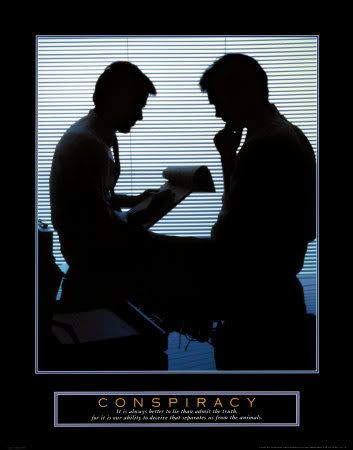
A conspiracy theory attempts to attribute the ultimate cause of an event or chain of events (usually political, social, or historical events), or the concealment of such causes from public knowledge, to a secret, and often deceptive plot by a covert alliance of powerful or influential people or organizations. Many conspiracy theories claim that major events in history have been dominated by conspirators who manipulate political happenings from behind the scenes.
The first recorded use of the phrase "conspiracy theory" dates back to an economics article in the 1920s, but it was only in the 1960s that it entered popular usage. It entered the supplement to the Oxford English Dictionary as late as 1997.[1]
The term "conspiracy theory" is used by mainstream scholars and in popular culture to identify a type of folklore similar to an urban legend, especially an explanatory narrative which is constructed with particular methodological flaws.[2] The term is also used pejoratively to dismiss claims that are alleged by critics to be misconceived, paranoid, unfounded, outlandish, irrational, or otherwise unworthy of serious consideration. For example "Conspiracy nut" and "conspiracy theorist" are used as pejorative terms. Some whose theories or speculations are labeled a "conspiracy theory" reject the term as prejudicial.
The term "conspiracy theory" may be a neutral descriptor for any conspiracy claim. To conspire means "to join in a secret agreement to do an unlawful or wrongful act or to use such means to accomplish a lawful end."[3] However, conspiracy theory is also used to indicate a narrative genre that includes a broad selection of (not necessarily related) arguments for the existence of grand conspiracies, any of which might have far-reaching social and political implications if true.
Whether or not a particular conspiracy allegation may be impartially or neutrally labeled a conspiracy theory is subject to some controversy. Conspiracy theory has become a highly charged political term, and the broad critique of 'conspiracy theorists' by academics, politicians, psychologists, and the media cuts across traditional left-right political lines.
The US academic Noam Chomsky contrasts conspiracy theory as more or less the opposite of institutional analysis, which focuses mostly on the public, long-term behaviour of publicly known institutions, as recorded in, e.g. scholarly documents or mainstream media reports, rather than secretive coalitions of individuals.
http://www.answers.com/topic/conspiracy-theory
Conspiracy Theories and Hoaxes
http://www.conspiracy-theories-hoax.com/
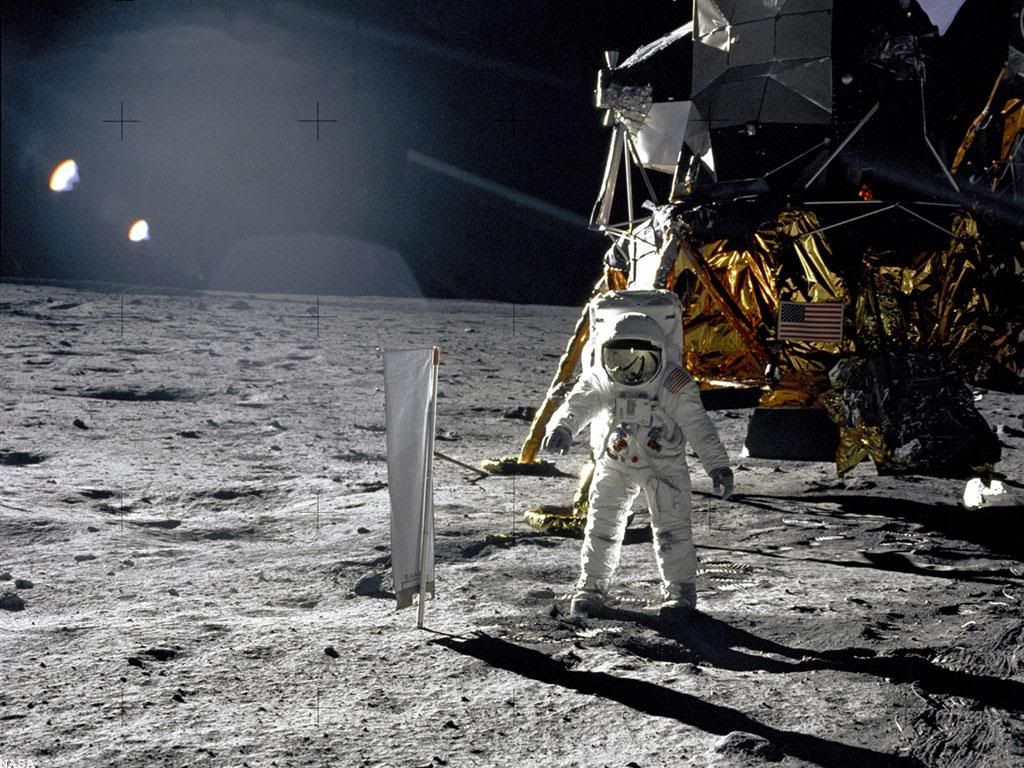
Apollo Moon Landing hoax accusations are claims that some or all elements of the Apollo Moon landings were faked by NASA and possibly members of other involved organizations. Some groups and individuals have advanced alternate historical narratives which tend, to varying degrees, to include the following common elements:
* The Apollo Astronauts did not land on the Moon;
* NASA and possibly others intentionally deceived the public into believing the landing(s) did occur by manufacturing, destroying, or tampering with evidence, including photos, telemetry tapes, transmissions, and rock samples;
* NASA and possibly others continue to actively participate in the conspiracy to this day.
According to a 1999 poll conducted by the The Gallup Organization, what Gallup termed an "overwhelming majority" of the US public, some 89 percent, did not believe the landing was faked, while 6 percent did.[1] These hoax claims are widely dismissed as baseless by mainstream scientists, technicians and engineers[citation needed], as well as by NASA and its astronauts.
http://en.wikipedia.org/wiki/Apollo_Moon_Landing_hoax_accusations
End of Conspiracy Theories? Spacecraft Snoops Apollo Moon Sites
http://www.space.com/missionlaunches/050304_moon_snoop.html
A European spacecraft now orbiting the Moon could turn out to be a time machine of sorts as it photographs old landing sites of Soviet robotic probes and the areas where American Apollo crews set down and explored.
New imagery of old Apollo touchdown spots, from the European Space Agency's (ESA) SMART-1 probe, might put to rest conspiratorial thoughts that U.S. astronauts didn't go the distance and scuff up the lunar landscape. NASA carried out six piloted landings on the Moon in the time period 1969 through 1972.
Fringe theorists have said images of the waving flag -- on a Moon with no atmosphere -- and other oddities show that NASA never really went to the Moon. No serious scientist or spaceflight historian doubts the success of the Apollo program, however.
"We are observing some of the landing sites for calibration and ground truth purposes," said Bernard Foing, Chief Scientist of the ESA Science Program.
Foing told SPACE.com that the SMART-1 orbiter circling the Moon has already covered the Apollo 11, 16, 17 landing sites, as well as spots where the former Soviet Union's Luna 16 and Luna 20 automated vehicles plopped down. The images have not yet been released.
Detailed search planned
Given SMART-1's initial high orbit, however, it may prove difficult to see artifacts, Foing explained. Using its ion engine, the probe has successfully spiraled down further to an altitude closer to the Moon.
Foing said that each Apollo site, where the engine blast of the two-person landing craft stirred up the landscape, could be worthwhile targets for SMART-1 imaging.
"We shall search for them, with measurements not only in black and white, but also in three colors giving some information about minerals, weathering or [rocket engine] plume disturbance," he said.
SMART-1 operators also plan sequences that keep the probe's camera specially trained on some landing sites as it sweeps overhead, Foing said. Along with these observations and others, the spacecraft will also be busy gleaning data in preparation for future international lunar exploration missions, he emphasized.
SMART-1 arrived in lunar orbit last November. Last month, ESA announced that the lunar mission would be extended by one year, pushing back the mission end date from August 2005 to August 2006.
The extension permits stereo measurements of select areas of interest. Doing so, topography maps of specific lunar real estate can be created. Mapping prospective landing sites for future robotic and human missions are possible too.
Why not Hubble?
If SMART-1 can get an eyeful, why not use the Hubble space telescope to take photos of the Apollo landing sites? Hubble did photograph the Moon, in 1999.
"Anything left on the Moon cannot be resolved in any Hubble image," According to the Space Telescope Science Institute, which operates Hubble for NASA. "It would just appear as a dot."
Meanwhile, the trickiest task that the SMART-1 scientists have set themselves is to use a spacecraft spectrometer to look for the infrared signature of water ice, and perhaps frozen carbon dioxide and carbon monoxide too. Previous missions have provided evidence for water ice tucked away in permanently shadowed polar craters.
Any water on the lunar surface would be very helpful in the creation of permanent bases on the Moon, as outlined last year by President Bush. Other nations have Moon plans, too.
But to have survived, the water must be in the form of ice in places always hidden from the Sun. Such dark places exist, notably in the bottoms of small craters in the Moon's polar regions.
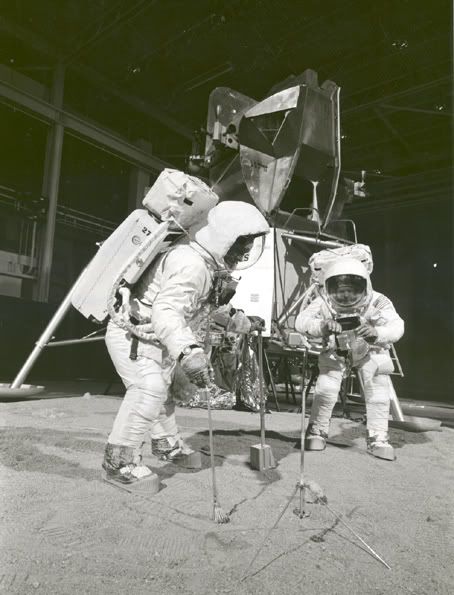
NASA debunks moon landing hoax conspiracy
http://archives.cnn.com/2001/TECH/space/02/19/nasa.moon/
Did NASA land men on the moon? "Yes, we did," the space agency proclaimed Monday on the Internet, rebutting newly boosted claims from conspiracy theorists that the Apollo missions were faked.
"A recent TV program resurfaced old questions about whether NASA really sent astronauts to the moon between 1969 and 1972. We did," the agency said on its home page.
MESSAGE BOARD
Moon landing: myth or fact?
Airing Thursday on the Fox Network, the sensational show advanced the idea that the United States did not have the ability to go the moon but staged the landings to one-up the Soviet Union during the Cold War.
Reputable scientists dismiss the claim outright. "Sounds ridiculous? Of course it does! It is. So let me get this straight right form the start: This program is an hour-long piece of junk," explained astronomer Phil Plait on his Web site, Badastronomy.com.
The theorists point to supposed oddities in NASA moon shots to boost their claim. Among the most prominent: The U.S. flag should not be waving. Camera crosshairs should not be behind lunar features in the distance. Stars should be in the background.
Plait and other scientists dismiss such notions. Flags can ripple in a vacuum and the U.S. one is doing so because an astronaut is moving the pole to which it is attached.
Camera crosshairs appear to be behind white objects in some images because the images bled slightly during development, like overexposed film. And why are the stars absent? They are too faint for the camera to pick up, according to Plait.
"From the very first moment to the last, the program is loaded with bad thinking, ridiculous suppositions and utterly wrong science," he said.
NASA adds another line of defense. The program never raised the issue of more than 800 pounds (363 kg) of lunar rocks that astronauts brought back to Earth.
"Geologists worldwide have been examining these samples for 30 years, and the conclusion is inescapable. The rocks could not have been collected or manufactured on Earth," the NASA site said.
The space agency has encountered other such theories since the landings took place. Why bother to respond to what most consider such harebrained ideas?
"I think it wasn't in respect to the show. It was an answer to the number of e-mails that we were getting as a result of the show," NASA spokesman Bob Jacobs said. Many of them came from elementary school teachers, who said their students had asked them about the show's claims.
Did we landed on the moon by Fox TV
Was The Apollo Moon Landing Fake?
http://www.apfn.org/apfn/moon.htm
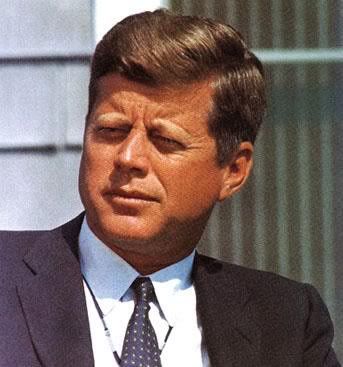
A number of theories exist with regard to the assassination of U.S. President John F. Kennedy. Such theories began to be generated soon after his death, and continue to be proposed today. Many of these theories propose a criminal conspiracy involving parties such as the Federal Reserve, the Central Intelligence Agency (CIA), the KGB, the Mafia, Federal Bureau of Investigation (FBI) director J. Edgar Hoover, Vice President Lyndon B. Johnson, Richard Nixon, Fidel Castro, George H. W. Bush, Cuban exile groups opposed to the Castro government and the military and/or government interests of the United States.
http://en.wikipedia.org/wiki/Kennedy_assassination_theories
JFK Assassination Resources Online
http://www.jfk-online.com/
Facts and Fiction in the Kennedy Assassination
http://www.csicop.org/si/2005-01/strange-world.html
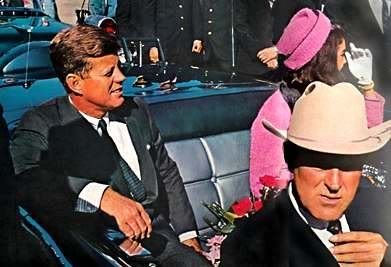
40 Years Later: Who Killed JFK?
Belief In A Conspiracy Remains Strong Among American People
http://www.cbsnews.com/stories/2003/11/20/national/main584668.shtml
The greatest whodunit in American history — the genesis of an unrelenting debate over the motive of the president's killer.
Or killers.
Indeed, the notion that Lee Harvey Oswald did not act alone in killing the president might be the ultimate "conspiracy theory" because it is one that most Americans believe. A 1998 CBS News poll found that only 10 percent of respondents felt Oswald acted alone. Seventy-four percent believed there was a cover-up. Recent polls suggest that this is still the way Americans feel.
Speculation over "what really happened" in Dallas on Nov. 22, 1963 is a national institution. Hundreds of books, films, television specials and websites have sifted through the minutiae of assassination evidence, suspicion and intrigue. Words like "magic bullet" and "grassy knoll" are part of the vernacular. Theorists have fingered suspects from the Mafia to the Cubans to the CIA to Lyndon Johnson and the Federal Reserve.
According to longtime Clinton aide Webster Hubbell's memoir, President Clinton told his trusted ally and Justice Department appointee there were two things he wanted found out: whether there were UFOs, and who killed JFK. In the past year, U.S. newspapers have mentioned Oswald 760 times — more than twice as frequently as either Sirhan Sirhan or James Earl Ray, the men who murdered Sen. Robert Kennedy and Rev. Martin Luther King Jr., respectively.
As fascinating as the debate over who killed the president is another question: Why does the shooting 40 years ago still captivate?
James Fetzer, a professor of philosophy at the University of Minnesota (Duluth) who claims proof of a conspiracy, believes the killing of Mr. Kennedy still interests Americans — in part — because of the glamour and mystique projected by the president and first lady.
A more important reason, he said, is that the story told by the Warren Commission — the official government probe of the president's killing — was simply too full of holes.
"I think people know at a deep, subconscious level that they were being lied to by the government," he said. "If the president of the United States can be assassinated in the middle of the day, then the American people have no basis to believe what their government says to them."
Doubts about the "lone gunman theory" emerged almost immediately after the president's death. That prompted the Warren Commission to report in 1964 that it found no evidence "of any conspiracy, domestic or foreign, to assassinate President Kennedy."
"Others of the more widely publicized rumors maintained that Oswald must have received aid from one or more persons or political groups," the Commission reported, "ranging from the far left to the far right of the political spectrum, or from a foreign government, usually either the Castro regime in Cuba or the Soviet Union."
Fifteen years later, the House Select Committee on Assassinations found "on the basis of the evidence available to it, that President John F. Kennedy was probably assassinated as a result of a conspiracy."
The crucial difference between the two reports was that the Warren Commission believed the president was killed by the shots fired by Oswald, while the House committee suspected two gunmen were involved, based on "various scientific projects."
But the House committee was "unable to identify the other gunman or the extent of the conspiracy."
It said the Soviet government wasn't involved. It found the Cuban government wasn't responsible. It concluded the Secret Service, the CIA and the FBI weren't to blame. And it decided that anti-Castro groups and the Mafia weren't behind the killing, but that the evidence couldn't rule out that individual members were involved.
The sheer number of possible explanations might be part of the appeal of the JFK case. John McAdams, associate professor of political science at Marquette University and a skeptic of conspiracy theories, notes that the Kennedy assassination offers something for everyone: Leftists can blame the CIA, while right wingers can suspect communists.
The three earlier killings of American presidents offered less room for that sort of speculation. It was obvious why John Wilkes Booth shot President Lincoln. He and his co-conspirators were eventually rounded up and executed. Charles J. Guiteau and Leon F. Czolgosz, the men who killed Presidents Garfield and McKinley, respectively, were both mentally disturbed; there were no hints of larger plots.
In Kennedy's case, however, the idea that a "lone nut" could kill the most powerful man in the world was unsettling.
"People like to believe that things happen in the world for a reason," McAdams says. "They don't want to believe that chance events like that can move history. It's much more comforting to believe that large events have important causes."
If the 1998 CBS News poll is any indication, Americans never expect to be reassured. Seventy-seven percent said they believed the truth of who killed Mr. Kennedy would always be a mystery.
Fetzer believes that lack of closure, coupled with the suspicion that the government is withholding the truth, is a cancer on the American psyche that has undermined trust in public institutions. "It must be excised," he said.
The hope that the one, crucial, missing clue will someday surface is a faint one, McAdams said. Most government documents on the assassination were released in the 1990s. New forensic techniques might emerge, but it's unlikely evidence was collected on which those techniques might be used.
"For all practical purposes, the evidence we have now is the evidence that will exist for the ages," McAdams said.
Likely, the mystery of what really happened in Dallas will persist as well.
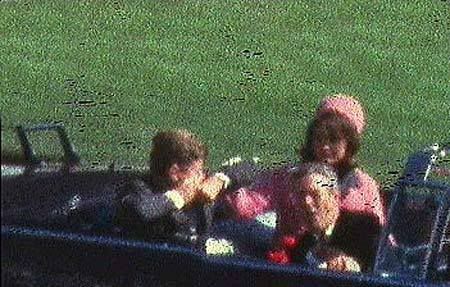
JFK conspiracy theories debunked
JFK Conspiracy Theories: A Book to Disprove Them All
Storied Prosecutor Writes Tome About 'Most Important Case in U.S. History'
http://abcnews.go.com/US/story?id=3174540
In the decades since the assassination of President Kennedy, the questions about who killed him and why still draw fierce debate despite the 1964 Warren Commission report that fingered Lee Harvey Oswald.
By some measures, as many as three-quarters of Americans believe there was a conspiracy. Vincent Bugliosi, the famed prosecutor who put away Charles Manson and co-authored the book "Helter Skelter" about the Manson trial, is not one of them.
Bugliosi has written a comprehensive book that claims to debunk nearly every conspiracy theory put forth: the 1,600-page-long "Reclaiming History: The Assassination of President John F. Kennedy."
In an interview with ABC News' Cynthia McFadden, Bugliosi explained why it was necessary to write a book of such length.
"The case has become kind of complex as a result of the unceasing, fanatical obsession of literally thousands upon thousands of researchers in this case examining every single aspect of this case, making hundreds upon hundreds of allegations," he said.
'Most Important Case in U.S. History'
While Bugliosi blames conspiracy theorists for making the JFK assassination more complex than it should be, he might be accused of becoming obsessed with the case.
After all, it took 20 years to complete the book. However, Bugliosi said, "the Kennedy case is the most important murder case in American history. … I think the assassination, to put it mildly, was sufficiently important to have a book for the ages written for it."
Bugliosi said others who had attempted to tackle the material had until now been able to concentrate only on specific parts of the case and parts of the conspiracy theories. In "Reclaiming History," he attempts to encapsulate every aspect of the case.
"I decided, maybe like a fool, to take on the whole case, and there's no bottom of the pile in the Kennedy case," he said.
Bugliosi said that in the last seven years he'd worked between 80 and 100 hours a week on the tome, writing every day during that time. He doesn't own a computer, and while some of his notes were dictated to an assistant, most of the book was written in longhand on yellow legal paper.
Debunking the Conspiracy Theories
He passionately contends that there is no credible evidence to uphold any of the conspiracy theories put forth, merely speculation.
"It would not be humanly possible for Oswald to be innocent," Bugliosi said. "In the book, I give 53 separate pieces of evidence that point towards his guilt, and in the real world you cannot have 53 pieces of evidence pointing toward your guilt and still be innocent."
Bugliosi refutes the theory that the president could not have been shot by Oswald from behind because his head -- as seen in the famous Zapruder film -- pushes backward.
According to the author, the film needs to be looked at frame by frame rather than continuously. In doing so, one can see that the slain president's head does indeed push forward before slumping back, he said.
What about the "magic bullet theory" that claims Texas Gov. John Connally, who was also wounded while riding in a motorcade, couldn't have been hit by the same bullet as Kennedy?
"Connally was not seated directly in front of Kennedy but to Kennedy's left-front. Therefore, the orientation of his body vis-a-vis Kennedy was such that a bullet passing through Kennedy's body in a straight line through soft tissue had nowhere else to go except to hit John Connally," he said.
Bugliosi saves his greatest criticism and disdain, however, for the most famous of all the doubters about the Kennedy case: movie director Oliver Stone.
Many believe that Stone's 1991 film, "JFK," has done more to fuel the controversy than any other book or film on the subject.
"Oliver Stone does not look good after this book. His movie is one continuous lie. He didn't have one single piece of evidence pointing toward Oswald's guilt in his movie," Bugliosi said, adding sarcastically, "I understand, he didn't have time -- it was only three hours and eight minutes."
Stone, Bugliosi says, "had the stratospheric audacity to call his film the truth. … And he said he wanted his film to replace the Warren report."
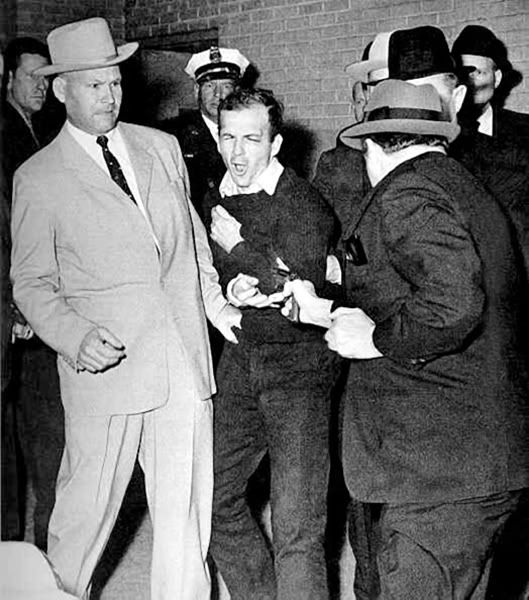
9/11
Since the September 11, 2001 attacks, a variety of conspiracy theories emerged which dispute the mainstream account of the events that occurred on and after September 11, 2001. Although the accepted account also theorizes a conspiracy, one between Al Qaeda members, the term "9/11 conspiracy theories" usually refers only to theories of an "inside job". The theories typically include suggestions that individuals in (or associated with) the government of the United States knew of the impending attacks and refused to act on that knowledge, or that the attacks were a false flag operation carried out with the intention of stirring up the passions and buying the allegiance of the American people.
Some conspiracy theories claim that the collapse of the World Trade Center was the result of a controlled demolition and that United Airlines Flight 93 was shot down. While some also contend that a commercial airliner did not crash into the Pentagon, this position is debated within the 9/11 Truth Movement, with many who believe that AA Flight 77 did crash there, but that it was allowed to crash via an effective stand down of the military.[1]
Published reports by the National Institute of Standards and Technology do not support the controlled demolition hypothesis.[2][3] The vast majority of U.S. officials, mainstream journalists, and independent researchers concluded that Al Qaeda is solely responsible for the attacks and the resulting destruction.
http://en.wikipedia.org/wiki/9/11_conspiracy_theories
Debunking 9/11 Myths - Popular Mechanics
http://www.popularmechanics.com/blogs/911myths/
The History of 9/11 Conspiracy Theories
http://911guide.googlepages.com/history
The Top September 11 Conspiracy Theories
http://usinfo.state.gov/xarchives/display.html?p=pubs-english&y=2006&m=August&x=20060828133846esnamfuaK0.2676355
Numerous unfounded conspiracy theories about the September 11 attacks continue to circulate, especially on the Internet. Some of the most prevalent myths are:
1) The World Trade Center (WTC) twin towers were destroyed by controlled demolitions.
This is how the collapses may have appeared to non-experts, but demolition experts point out many differences:
* Demolition professionals always blow the bottom floors of a structure first, but the WTC tower collapses began at the upper levels, where the planes hit the buildings.
* Non-experts claim that debris seen blowing out of windows was evidence of explosive charges, but experts identify this as air and light office contents (paper, pulverized concrete, etc.) being forced out of windows as floors collapsed on each other.
* Demolition firms had very sensitive seismographs operating at other sites in Manhattan on September 11. None recorded any explosions during the tower collapses.
* Clean-up crews found none of the telltale signs of controlled demolitions that would have existed if explosive charges had been used.
* Cutting away walls, insulation, plumbing, and electrical conduits to place numerous charges on the towers’ structural columns in advance would not have gone unnoticed.
* For more information, see ImplosionWorld’s article on the WTC collapses and Popular Mechanics, parts 4 and 5.
2) No plane hit the Pentagon on September 11. Instead, it was a missile fired by elements “from inside the American state apparatus.”
Conspiracy theorists making this claim ignore several facts:
* The remains of the bodies of the crew and passengers of American Airlines flight 77 were found at the Pentagon crash site, and positively identified by DNA.
* The flight’s black box was also recovered at the site.
* Numerous eyewitnesses saw the plane strike the Pentagon. Some saw passengers through the plane’s windows. Missiles don’t have windows or carry passengers.
* Numerous photographs show airplane debris at the crash site, as was also witnessed by survivors and rescue personnel. See sections 4:57 to 6:00 of the “911 Case Study: Pentagon Flight 77” video for pictures of airliner debris.
* For more information, see “Did a Plane Hit the Pentagon?” and Popular Mechanics, part 6.
3) The planes that hit the World Trade Center towers were remotely controlled.
* Boeing, which manufactured the planes that struck the towers, stated that all its commercial jet transports are configured so that they cannot be controlled from anywhere except the flight deck of the aircraft.
* Passengers onboard the flights made several phone calls. All reported that hijackers had commandeered the planes.
* For more information, see “Did a Plane Hit the Pentagon?”
4) United Airlines flight 93, which crashed in Pennsylvania, was shot down by a missile.
* The cockpit voice recorder of this flight was recovered and showed that the passenger revolt caused the hijackers to deliberately crash the plane. The hijackers controlled the plane until its impact. See full transcript.
* The U.S. military did not learn that flight 93 had been hijacked until four minutes after it crashed, as recently released tapes demonstrate.
* The military never gave interceptor pilots authorization to shoot down United flight 93. See article on tapes.
* Listen to the 45-second message left by flight attendant CeeCee Lyles on her home answering machine. Click on the “Lyles” file or the phone icon in the bottom left corner of the flight 93 page.
* For more information, see The 9/11 Commission Report chapter 1, “We Have Some Planes,” pages 13-14.
5) World Trade Center building 7 was destroyed by a controlled demolition.
* This allegation was fueled by a comment by the WTC owner that, after WTC 7 was judged to be unstable, he recommended pulling a group of firefighters out of the building, using the phrase “pull it” in reference to the contingent of firefighters. For more details, see 9/11 Revealed?
* Conspiracy theorists have interpreted the “pull it” remark as slang for demolishing the building with explosives. But demolition experts say “pulling” a building means attaching long cables to a weakened structure and literally pulling it down with bulldozers and other powerful machinery – not using explosives.
* Seismographs recorded no telltale spikes or anomalies that would have indicated the use of explosives.
* For more information, see ImplosionWorld article and Popular Mechanics, part 5.
6) Insider trading in the stocks of United Airlines and American Airlines just before September 11 is evidence of advance knowledge of the plot.
* The 9/11 Commission investigated this issue in detail, concluding, “Some unusual trading did in fact occur, but each such trade proved to have an innocuous explanation.”
* For example, it stated, “much of the seemingly suspicious trading in American [Airlines stock] on September 10 was traced to a specific U.S.-based options trading newsletter, faxed to its subscribers on Sunday, September 9, which recommended these trades.”
* For other examples, see The 9/11 Commission Report, “Notes” section, page 499, footnote 130.
7) Four thousand Jews failed to show up for work at the World Trade Center on September 11.
* It appears from media reports that some 10-15% of WTC victims were Jewish, indicating there were no mass absences.
* The “4,000” figure apparently came from an early statement by the Israeli Foreign Ministry that some “4,000 Israelis” were believed to be in the New York and Washington areas, where the attacks occurred. This figure was apparently seized upon by conspiracy theorists, in an attempt to bolster the false rumor.
* For more information, see “The 4,000 Jews Rumor.”
8) Al Qaida is not responsible for the September 11 attacks.
* Al Qaida leaders, including Osama bin Laden, have repeatedly confirmed that they planned and carried out the September 11 attacks.
* In an audiotape released on May 23, 2006, bin Laden stated, “I was responsible for entrusting the 19 brothers … with those raids ….”
* In a November 2001 tape, bin Laden said, “We calculated in advance the number of casualties … who would be killed …. I was the most optimistic of them all. … Due to my experience in this field, I was thinking that the fire from the gas in the plane would melt the iron structure of the building and collapse the area where the plane hit and all the floors above it only.”
* For more information, see “Al Qaeda and September 11th.”
(Distributed by the Bureau of International Information Programs, U.S. Department of State. Web site: http://usinfo.state.gov)

Why the 9/11 Conspiracy Theories Won't Go Away
http://www.time.com/time/magazine/article/0,9171,1531304,00.htm
Take a look, if you can stand it, at video footage of the World Trade Center collapsing. Your eye will naturally jump to the top of the screen, where huge fountains of dark debris erupt out of the falling towers. But fight your natural instincts. Look farther down, at the stories that haven't collapsed yet.
In almost every clip you'll see little puffs of dust spurting out from the sides of the towers. There are two competing explanations for these puffs of dust: 1) the force of the collapsing upper floors raised the air pressure in the lower ones so dramatically that it actually blew out the windows. And 2) the towers did not collapse from the impact of two Boeing 767s and the ensuing fires. They were destroyed in a planned, controlled demolition. The dust puffs you see on film are the detonations of explosives planted there before the attacks.
People who believe the second explanation live in a very different world from those who believe the first. In world No. 2, al-Qaeda is not responsible for the destruction of the World Trade Center. The U.S. government is. The Pentagon was not hit by a commercial jet; it was hit by a cruise missile. United Flight 93 did not crash after its occupants rushed the cockpit; it was deliberately taken down by a U.S. Air Force fighter. The entire catastrophe was planned and executed by federal officials in order to provide the U.S. with a pretext for going to war in the Middle East and, by extension, as a means of consolidating and extending the power of the Bush Administration.
The population of world No. 2 is larger than you might think. A Scripps-Howard poll of 1,010 adults last month found that 36% of Americans consider it "very likely" or "somewhat likely" that government officials either allowed the attacks to be carried out or carried out the attacks themselves. Thirty-six percent adds up to a lot of people. This is not a fringe phenomenon. It is a mainstream political reality.
Although the 9/11 Truth Movement, as many conspiracy believers refer to their passion, has been largely ignored by the mainstream media, it is flourishing on the Internet. One of the most popular conspiracy videos online is Loose Change, a 90-min. blizzard of statistics, photographs, documents, eyewitness accounts and expert testimony set to a trippy hip-hop backbeat. It's designed to pick apart, point by point, the conventional narrative of what happened on Sept. 11, 2001.
For all its amateur production values--it was created by a pair of industrious twentysomethings using a laptop, pizza money and footage scavenged from the Internet--Loose Change is a compelling experience. Take the section about the attack on the Pentagon. As the film points out--and this is a tent-pole issue among 9/11 conspiracists--the crash site doesn't look right. There's not enough damage. The hole smashed in the Pentagon's outer wall was 75 ft. wide, but a Boeing 757 has a 124-ft. wingspan. Why wasn't the hole wider? Why does it look so neat?
Experts will tell you that the hole was punched by the plane's fuselage, not its wings, which sheared off on impact. But then what happened to the wings? And the tail and the engines? Images of the crash site show hardly any of the wreckage you would expect from a building that's been rammed by a commercial jet. The lawn, where the plane supposedly dragged a wing on approach, is practically pristine. The plane supposedly clipped five lampposts on its way in, but the lampposts in question show surprisingly little damage. And could Hani Hanjour, the man supposedly at the controls, have executed the maneuvers that the plane performed? He failed a flight test just weeks before the attack. And Pentagon employees reported smelling cordite after the hit, the kind of high explosive a cruise missile carries.
There's something empowering about just exploring such questions. Loose Change appeals to the viewer's common sense: it tells you to forget the official explanations and the expert testimony, and trust your eyes and your brain instead. It implies that the world can be grasped by laymen without any help or interference from the talking heads. Watching Loose Change, you feel as if you are participating in the great American tradition of self-reliance and nonconformist, antiauthoritarian dissent. You're fighting the power. You're thinking different. (Conspiracists call people who follow the government line "sheeple.") "The goal of the movie was just really to get out there and show that there are alternate stories to what the mainstream media and the government will tell you," says Korey Rowe, 23, who produced the movie. "That 19 hijackers are going to completely bypass security and crash four commercial airliners in a span of two hours, with no interruption from the military forces, in the most guarded airspace in the United States and the world? That to me is a conspiracy theory."
It's also not much of a story line. As a narrative, the official story that the government--echoed by the media--is trying to sell shows an almost embarrassing lack of novelistic flair, whereas the story the conspiracy theorists tell about what happened on Sept. 11 is positively Dan Brownesque in its rich, exciting complexity. Rowe and his collaborator, Dylan Avery, 22, actually started writing Loose Change as a fictional screenplay--"loosely based around us discovering that 9/11 was an inside job," Rowe says--before they became convinced that the evidence of conspiracy was overwhelming. The Administration is certainly playing its part in the drama with admirable zeal. If we went to war to root out fictional weapons of mass destruction, is staging a fictional terrorist attack such a stretch?
But there's a big problem with Loose Change and with most other conspiracy theories. The more you think about them, the more you realize how much they depend on circumstantial evidence, facts without analysis or documentation, quotes taken out of context and the scattered testimony of traumatized eyewitnesses. (For what it's worth, the National Institute of Standards and Technology has published a fact sheet responding to some of the conspiracy theorists' ideas on its website, www.nist.gov. The theories prompt small, reasonable questions that demand answers that are just too large and unreasonable to swallow. Granted, the Pentagon crash site looks odd in photographs. But if the Pentagon was hit by a cruise missile, then what happened to American Airlines Flight 77? Where did all the real, documented people on it go? Assassinated? Relocated? What about eyewitnesses who saw a plane, not a missile? And what are the chances that an operation of such size--it would surely have involved hundreds of military and civilian personnel--could be carried out without a single leak? Without leaving behind a single piece of evidence hard enough to stand up to scrutiny in a court? People, the feds just aren't that slick. Nobody is.
There are psychological explanations for why conspiracy theories are so seductive. Academics who study them argue that they meet a basic human need: to have the magnitude of any given effect be balanced by the magnitude of the cause behind it. A world in which tiny causes can have huge consequences feels scary and unreliable. Therefore a grand disaster like Sept. 11 needs a grand conspiracy behind it. "We tend to associate major events--a President or princess dying--with major causes," says Patrick Leman, a lecturer in psychology at Royal Holloway University of London, who has conducted studies on conspiracy belief. "If we think big events like a President being assassinated can happen at the hands of a minor individual, that points to the unpredictability and randomness of life and unsettles us." In that sense, the idea that there is a malevolent controlling force orchestrating global events is, in a perverse way, comforting.
You would have thought the age of conspiracy theories might have declined with the rise of digital media. The assassination of President John F. Kennedy was a private, intimate affair compared with the attack on the World Trade Center, which was witnessed by millions of bystanders and television viewers and documented by hundreds of Zapruders. You would think there was enough footage and enough forensics to get us past the grassy knoll and the magic bullet, to create a consensus reality, a single version of the truth, a single world we can all live in together.
But there is no event so plain and clear that a determined human being can't find ambiguity in it. And as divisive as they are, conspiracy theories are part of the process by which Americans deal with traumatic public events like Sept. 11. Conspiracy theories form around them like scar tissue. In a curious way, they're an American form of national mourning. They'll be with us as long as we fear lone gunmen, and feel the pain of losses like the one we suffered on Sept. 11, and as long as the past, even the immediate past, is ultimately unknowable. That is to say, forever.
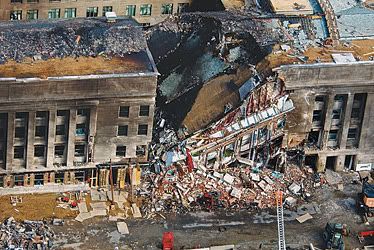
Third of Americans suspect 9-11 government conspiracy
http://www.scrippsnews.com/911poll
More than a third of the American public suspects that federal officials assisted in the 9/11 terrorist attacks or took no action to stop them so the United States could go to war in the Middle East, according to a new Scripps Howard/Ohio University poll.
The national survey of 1,010 adults also found that anger against the federal government is at record levels, with 54 percent saying they "personally are more angry" at the government than they used to be.
Widespread resentment and alienation toward the national government appears to be fueling a growing acceptance of conspiracy theories about the 2001 attacks on the World Trade Center and the Pentagon.
Suspicions that the 9/11 attacks were "an inside job" _ the common phrase used by conspiracy theorists on the Internet _ quickly have become nearly as popular as decades-old conspiracy theories that the federal government was responsible for President John F. Kennedy's assassination and that it has covered up proof of space aliens.
Seventy percent of people who give credence to these theories also say they've become angrier with the federal government than they used to be.
Thirty-six percent of respondents overall said it is "very likely" or "somewhat likely" that federal officials either participated in the attacks on the World Trade Center and the Pentagon or took no action to stop them "because they wanted the United States to go to war in the Middle East."
"One out of three sounds high, but that may very well be right," said Lee Hamilton, former vice chairman of the National Commission on Terrorist Attacks Upon the United States (also called the 9/11 commission.) His congressionally appointed investigation concluded that federal officials bungled their attempts to prevent, but did not participate in, the attacks by al Qaeda five years ago.
"A lot of people I've encountered believe the U.S. government was involved," Hamilton said. "Many say the government planned the whole thing. Of course, we don't think the evidence leads that way at all."
The poll also found that 16 percent of Americans speculate that secretly planted explosives, not burning passenger jets, were the real reason the massive twin towers of the World Trade Center collapsed.
Conspiracy groups for at least two years have also questioned why the World Trade Center collapsed when fires that heavily damaged similar skyscrapers around the world did not cause such destruction. Sixteen percent said it's "very likely" or "somewhat likely" that "the collapse of the twin towers in New York was aided by explosives secretly planted in the two buildings."
Twelve percent suspect the Pentagon was struck by a military cruise missile in 2001 rather than by an airliner captured by terrorists
That lower percentage may result from an effort by the conservative Washington-based Judicial Watch advocacy group to debunk the claim. The group filed claims under the Freedom of Information Act and got two fill loops released from Pentagon security cameras.
"Some people claim they can't see anything, but I see a plane hitting the Pentagon at incredibly high speed," said Judicial Watch President Tom Fitton. "I see the nose of the plane clearly entering the frame of one video and the tail of the plane entering the Pentagon in the other video."
Many conspiracy Web sites have posted the video loops and report the films are inconclusive or were manipulated by the government.
"Some folks will never be convinced," Fitton said. "But I'm hoping that these videos will dissuade reasonable people from falling into a trap with these conspiracy theories."
University of Florida law professor Mark Fenster, author of the book "Conspiracy Theories: Secrecy and Power in American Culture," said the poll's findings reflect public anger at the unpopular Iraq war, realization that Saddam Hussein did not have weapons of mass destruction and growing doubts of the veracity of the Bush administration.
"What has amazed me is not that there are conspiracy theories, but that they didn't seem to be getting any purchase among the American public until the last year or so," Fenster said. "Although the Iraq war was not directly related to the 9/11 attacks, people are now looking back at 9/11 with much more skepticism than they used to."
Conspiracy-believing participants in the poll agree their suspicions are recent.
"I certainly didn't think of conspiracies when 9/11 first happened," said Elaine Tripp, 62, of Tabernacle, N.J. "I don't know if President Bush was aware of the exact time it was going to happen. But he certainly didn't do enough to stop it. Bush was so intent on having his own little war."
Garrett Johnson, 19, of Manassas, Va., said it was "well after the fact" before he started questioning the official explanation of the attacks. "But then people I know started talking about it. And the Internet had a lot to do with this. After reading all of the different articles there, I started to think we weren't being told the truth."
The Scripps Survey Research Center at Ohio University has tracked the level of resentment people feel toward the federal government since 1995, starting shortly after Timothy McVeigh bombed the federal building in Oklahoma City. Forty-seven percent then said they, personally, feel "more angry at the federal government" than they used to. That percentage dropped to 42 percent in 1997, 34 percent in 1998 and only 12 percent shortly after 9/11 during the groundswell of patriotism and support for the government after the attacks.
But the new survey found that 77 percent say their friends and acquaintances have become angrier with government recently and 54 percent say they, themselves, have become angrier _ both record levels.
The survey also found that people who regularly use the Internet but who do not regularly use so-called "mainstream" media are significantly more likely to believe in 9/11 conspiracies. People who regularly read daily newspapers or listen to radio newscasts were especially unlikely to believe in the conspiracies.
"We know that there are a lot of people now asking questions," said Janice Matthews, executive director of 911Truth.org, one of the most sophisticated Internet sites raising doubts about official explanations of the attacks. "We didn't have the Internet after Pearl Harbor, the Gulf of Tonkin or the Kennedy assassination. But we live in different times now."
Matthews' Web site averaged 4,000 "hits" a day last year, but currently has at least 12,000 visits every 24 hours. The site, according to its online policy statement, is dedicated to showing the public that "elements within the U.S. government must have orchestrated or participated in the execution of the attacks for these to have happened the way in which they did."
Participants in the poll were asked to respond to "several serious accusations that some people have made against the federal government in recent years." Five conspiracy theories were described and participants were asked if each was "very likely, somewhat likely or unlikely."
The level of suspicion of U.S. official involvement in a 9/11 conspiracy was only slightly behind the 40 percent who suspect "officials in the federal government were directly responsible for the assassination of President Kennedy" and the 38 percent who believe "the federal government is withholding proof of the existence of intelligent life from other planets."
The poll found that a majority of young adults give at least some credence to a 9/11 conspiracy compared to less than a fourth of people 65 or older. Members of racial and ethnic minorities, people with only a high school education and Democrats were especially likely to suspect federal involvement in 9/11.
The survey was conducted by telephone from July 6-24 at the Scripps Survey Research Center at the University of Ohio under a grant from the Scripps Howard Foundation. The poll has a margin of error of 4 percentage points.
Top 5 9/11 Conspiracy Theories Debunked
How to build your own conspiracy theory
With a little paranoia and a vivid imagination, the Web can help you make the most unreasonable connections seem downright logical.
http://archive.salon.com/people/feature/2000/10/02/king_lennon/index.html
It's 3 a.m. The red neon light from the movie theater marquee across the street floods my living room. The only sound is the churning of my liver struggling to filter the mixture of the liter of coffee and Jack Daniels that I have guzzled in the last few hours -- they've been hours of speeding up and slowing down, knowing that somewhere in between I would find the road that led me to this horrible truth.
Through the window, I see a soft rain beginning to fall. The ashtray is full of half-smoked Winstons. And somewhere in my coffee cup are the dregs of the fruit of knowledge. I swallowed the sucker whole. I can never go back now.
Netscape keeps whirring as if on some sort of virtual treadmill. It appears to be moving, but obviously isn't going anywhere. And I have serious work to do. I've been at it for hours now -- I rushed home as soon as I read Tuesday's headlines:
"Driver who hit Stephen King is found dead"
"John Lennon's killer seeks jail release"
It was not the first time I'd seen the horror writer linked to Mark David Chapman, the man serving time for the assassination of John Lennon, and it immediately reminded me of a 1994 article in the University of California at Santa Cruz student paper, the Fish Rap Live. When I first came across the piece, King was in town for a reading, and a man by the name of Steve Lightfoot was waiting with a message -- for the writer, and for the world.
Lightfoot was the owner of a van plastered with newspaper and magazine clippings, all of which, he claimed, revealed a plot devised by a nefarious conspiracy between Time, Newsweek, Richard Nixon and members of the Santa Cruz City Council to hide the identity of John Lennon's real killer: Stephen King. His theory was based on his observation that Chapman bears a resemblance to King, and that this three-named doppelganger was a willing fall guy to give cover to the writer/celebrity. Also part of the scheme, Lightfoot asserted, were "hundreds of falsely issued parking citations," which he'd found on his van.
Between Paul Auster and Oliver Stone, I learned long ago that there is no such thing as a coincidence. So now I am caught amid a swirl of information -- sources from Milan, Italy, to Bombay, India -- searching for clues as to what it all means on the only place where the answer can be found: the Internet.
As I begin to float around on the Web, the loose ends move toward an undeniable convergence. It's like that old video game "Missile Command": Slowly it becomes clear that seemingly random, wayward streams are actually moving, incontestably, toward one final direction.
The Internet is made for conspiracy buffs. It is a fundamental principle of geometry that a straight line can connect any two points. On the Net, just type in a search for any two celebrity names, any two cities, any two anything, and you're bound to get something back. And that little something, sometimes, is all you need. So it goes for Stephen King and John Lennon. The Internet simply helps us connect the dots. And one of the Web's key defining characteristics -- the ability to create associations, links, between unrelated information -- can almost, as if by magic, make the degrees of separation disappear. Observe:
A quick info-harvest performed by search engines reveals a handful of stories about Lightfoot and his King/Lennon/Chapman theory. But in that mix, I stumble upon a site in Italian buried among the search results. Now, I don't speak Italian, but the item titled "King soffre della sindrome di Lennon" tells me all I need to know. I continued my search.
Soon, I come across a story reprinted from the London Observer:
"King, a citizen of a country he nicknames the People's Republic of Paranoia, has sometimes trapped himself inside his own plots. For years, he explained his reclusiveness by describing a brush with John Lennon's killer. He emerged, he claimed, from a television interview at Rockefeller Center, and was accosted by a weedy youth who breathed: 'I'm your No. 1 fan.' King distinctly remembered signing an autograph 'with best wishes to Mark Chapman.'"
Ah ha! And as if that weren't the proof right there, check this out, from an old "60 Minutes" interview with King's wife, Tabitha: "It makes me nervous. I worry about his security ... The possibility that someone might try to do what was done to John Lennon to him. He is very well known, and there are real crazy people out there."
King. Lennon. Need I say more?
Soon, I begin to come up with my own. The guy who ran down King, the one who "mysteriously" turned up dead, was named Bryan Smith. Rearrange the letters and you have "hit man (rybs)." Hit man! Can you believe it? As soon as I figure out what the other letters stand for, I'm sure I'll have my answer. Repent You Beatle Slayer! Revenge, Yoko's Big Scheme!
Conspiracy theories do not need impenetrable bonds to survive. They are strings of circumstantial evidence which together create a maze of intrigue. And what better place for conspiracy buffs to congregate in a kind of global support group than the Internet. Yes, the Web offers us a chance to find people of like minds -- even if those minds aren't running on a full tank.
The spam I get on a weekly basis, on everything from the Kennedys to aliens, only underscores this fact. Here, we can all preach to our own choirs who will agree with any conspiracy, no matter how far-fetched. Already this week, an e-mail spread like wildfire naming "a well-placed Republican source" who claimed Dick Cheney's resignation from the GOP ticket was imminent. Other e-mails followed "confirming the rumor."
All the clues are there, just waiting to be connected. It is the vacuum and the echo chamber folded conveniently into one. Here, urban myths becomes gospel truths. Remember, the crazy man is only crazy until he is proven right. I think George Gershwin said that. And that proof remains only a click away.
It's too late for me, I am too far gone by now. Dawn has begun to creep over the bay, and I am still lost in the Web, looking for reasons. I see them hovering over me -- King, Lennon, Chapman, Lightfoot -- all of their heads take turns on the spider's body, while I, the lowly fly caught in the Web, struggle to make sense of it all.
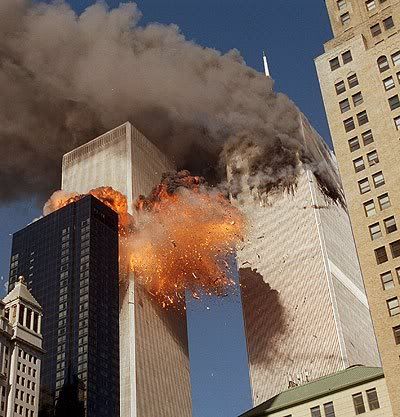
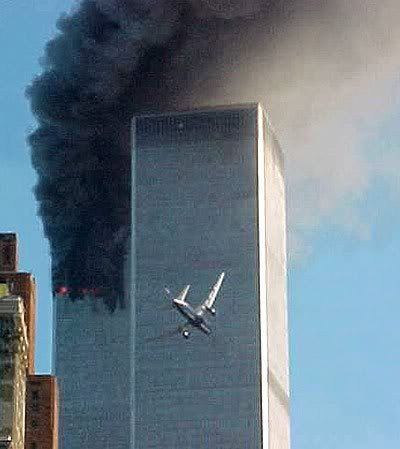
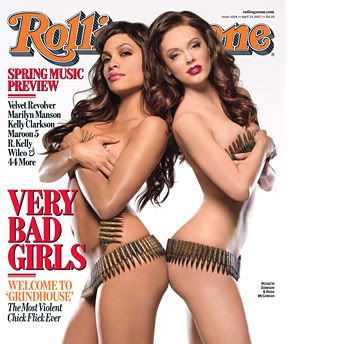
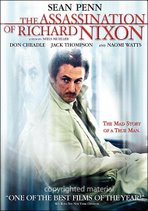
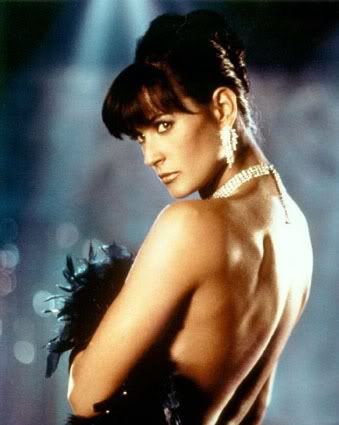



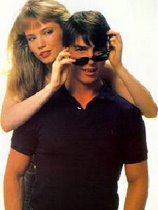



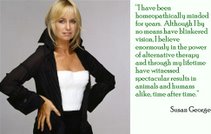
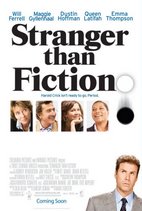
![Brotherhood" (2006) [TV-Series]](http://photos1.blogger.com/x/blogger2/1421/379621144723082/211/z/425926/gse_multipart33129.jpg)


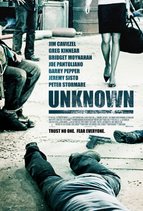
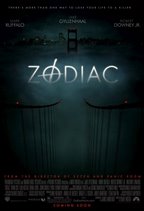
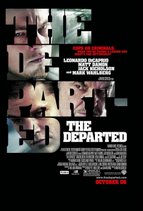

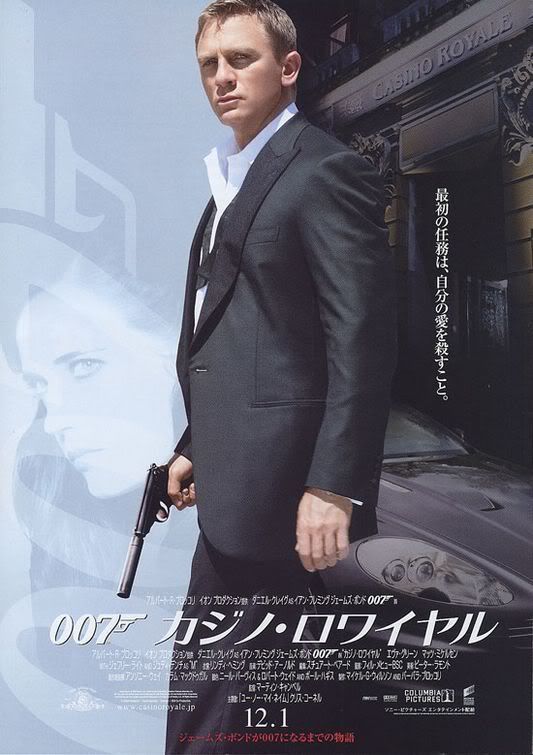
No comments:
Post a Comment